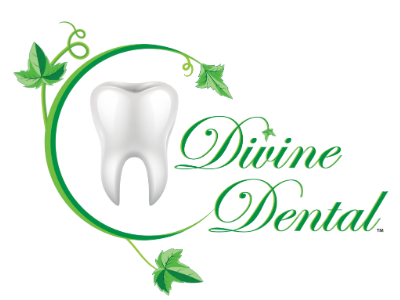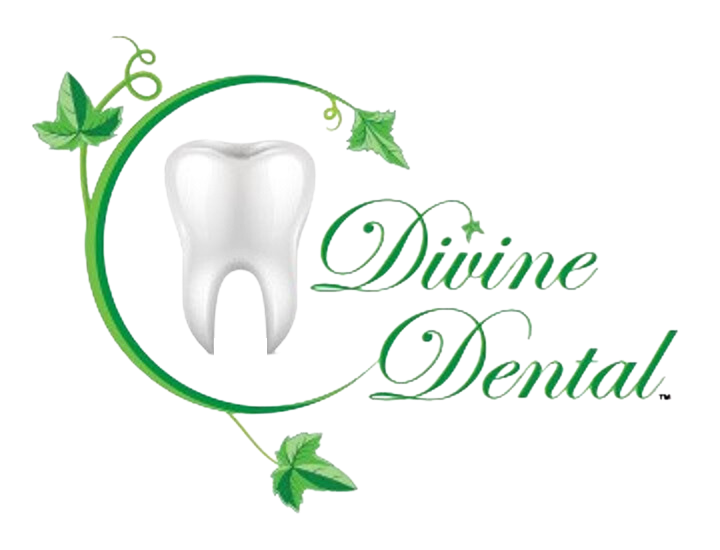How Often Should You Visit the Dentist: Expert Recommendations
Regular dental visits are essential for maintaining good oral health. But how often should you visit the dentist?
The answer to this question depends on several factors, including your age, overall health, and risk of oral health problems.
In this article, we’ll explore the recommended frequency of dental visits and the reasons why regular check-ups are so important.

For most people, the American Dental Association (ADA) recommends visiting the dentist twice a year for a routine cleaning and check-up.
However, some individuals may need to visit the dentist more frequently based on their specific needs.
For example, people with a higher risk of gum disease or tooth decay may need to visit the dentist more often.
Children, teenagers, and pregnant women may also need more frequent dental visits to ensure optimal oral health.
Regular dental visits are crucial for maintaining healthy teeth and gums.
In addition to preventing oral health problems like cavities and gum disease, routine check-ups can also help detect other health issues early on, such as oral cancer.
By visiting the dentist as recommended, you can ensure that your oral health is in top shape and catch any potential problems before they become more serious.
Key Takeaways
- The ADA recommends visiting the dentist twice a year for most people, but some may need more frequent visits based on their specific needs.
- Regular dental visits are important for preventing oral health problems and detecting other health issues early on.
- By visiting the dentist as recommended, you can maintain optimal oral health and catch any potential problems before they become more serious.
Importance of Regular Dental Visits
Regular dental visits are crucial for maintaining good oral health and preventing dental problems. Visiting the dentist at least twice a year can help catch any potential issues early on, before they become more serious and costly to treat.
Preventing Dental Problems
Regular dental check-ups can help prevent cavities and gum disease.
During these visits, the dentist can remove any plaque or tartar buildup that can lead to tooth decay and gum disease.
They can also provide fluoride treatments to help strengthen teeth and prevent cavities.
Early Detection of Oral Diseases
Dental visits can also help detect oral cancer and other oral diseases early on, when they are most treatable.
The dentist will perform an oral cancer screening during the check-up to check for any signs of cancer or precancerous lesions.
Overall, regular dental visits are an important part of maintaining good oral and overall health. Dental disease can have a significant impact on overall health , and many dental problems are preventable with regular check-ups and proper oral hygiene.
Recommended Frequency of Dental Visits
Regular dental visits are important for maintaining good oral health and preventing dental problems. The recommended frequency of dental visits may vary depending on a person’s age, overall health, and dental history.
General Guidelines for Adults
For most adults, it is recommended to visit the dentist twice a year for dental checkups and cleanings.
These regular visits can help detect dental problems early and prevent them from becoming more serious.
During the checkup, the dentist will examine the teeth, gums, and mouth for any signs of decay, gum disease, or other issues.
The dentist may also take X-rays to check for any hidden problems.
In addition to regular checkups, adults should also practice good oral hygiene habits at home, such as brushing twice a day, flossing daily, and using mouthwash.
This can help prevent dental problems and keep the teeth and gums healthy between dental visits.
Special Considerations for High Risk Groups
Certain groups of people may be at a higher risk for dental problems and may need to visit the dentist more frequently. These groups include:
- People with diabetes: Diabetes can increase the risk of gum disease and other dental problems.
People with diabetes should visit the dentist at least twice a year and maintain good blood sugar control.
- Smokers: Smoking can increase the risk of gum disease and other dental problems.
Smokers should visit the dentist at least twice a year and quit smoking to improve their oral health.
- Pregnant women: Pregnancy can increase the risk of gum disease and other dental problems.
Pregnant women should visit the dentist for regular checkups and cleanings and inform their dentist if they are pregnant.
- People with HIV: HIV can increase the risk of oral infections and other dental problems.
People with HIV should visit the dentist at least twice a year and inform their dentist of their HIV status.
- People with a family history of dental problems: People with a family history of dental problems may be at a higher risk for developing dental problems themselves.
These individuals should visit the dentist regularly and inform their dentist of their family history.
- People with a weak immune response: People with a weak immune response may be at a higher risk for dental infections and other problems.
These individuals should visit the dentist regularly and inform their dentist of their medical history.
Factors Affecting Dental Visit Frequency
Regular dental visits are essential for maintaining good oral health. However, the frequency of these visits may vary depending on several factors. Here are some factors that affect how often an individual should visit the dentist.
Personal Oral Hygiene and Habits
Individuals who maintain good oral hygiene habits such as brushing and flossing regularly, using mouthwash, and avoiding tobacco products are less likely to develop dental problems.
Such individuals may only need to visit the dentist once or twice a year for routine checkups and cleanings.
On the other hand, individuals with poor oral hygiene habits, such as irregular brushing and flossing, and a diet high in sugar, are at a higher risk of developing dental problems.
Such individuals may need to visit the dentist more frequently, such as every three to four months, to prevent the development of dental problems.
Existing Medical Conditions
Individuals with existing medical conditions, such as diabetes, heart disease, and cancer, are at a higher risk of developing dental problems.
Such individuals may need to visit the dentist more frequently, such as every three to four months, to prevent the development of dental problems.
Lifestyle and Dietary Choices
Individuals with lifestyle habits such as heavy alcohol consumption and recreational drug use are at a higher risk of developing dental problems.
Such individuals may need to visit the dentist more frequently, such as every three to four months, to prevent the development of dental problems.
Furthermore, individuals with poor dietary choices, such as a diet high in sugar, are at a higher risk of developing dental problems.
Such individuals may need to visit the dentist more frequently, such as every three to four months, to prevent the development of dental problems.
Children and Dental Visits
Regular dental checkups are important for children to maintain good oral hygiene habits and prevent dental problems.
Children should start visiting the dentist as soon as their first tooth appears or by their first birthday, whichever comes first.
Starting Age for Dental Checkups
The American Academy of Pediatric Dentistry recommends that children should have their first dental visit by age one.
This visit allows the dentist to check for any dental problems and provide guidance on proper oral hygiene practices for parents.
Frequency and Importance
After the first visit, children should continue to visit the dentist every six months for regular checkups and cleanings.
These visits are important for monitoring the growth and development of the child’s teeth and identifying any potential dental problems early on.
Children have unique smile needs and may require additional dental services such as fluoride treatments or sealants to protect their teeth from decay.
Regular dental visits can help ensure that these needs are met and prevent more serious dental problems from developing.
Insurance and Dental Visits
When it comes to dental visits, insurance coverage can play a significant role in determining how often you go to the dentist. Understanding dental insurance coverage and maximizing insurance benefits can help you make the most of your dental appointments.
Understanding Dental Insurance Coverage
Dental insurance plans vary widely in terms of coverage and benefits. Some plans cover only routine dental exams, while others cover more extensive dental work.
It is essential to understand the specifics of your insurance plan to know what is covered and what is not.
Most dental insurance plans cover routine dental exams, including cleanings and X-rays , at least once a year. However, some plans may cover more frequent visits, especially for individuals with specific dental health needs.
It is best to check with your insurance provider to understand the details of your coverage.
Maximizing Insurance Benefits
To maximize your dental insurance benefits, you need to schedule routine dental exams regularly.
Regular dental check-ups can help identify and treat dental issues early, preventing them from becoming more severe and costly.
Some dental insurance plans offer wellness programs that encourage preventative care, including regular dental exams.
These programs may offer additional benefits, such as discounts on certain dental procedures or access to educational resources.
Oral Health Maintenance at Home
Maintaining good oral health is crucial for preventing dental problems and ensuring a healthy smile.
While regular visits to the dentist are important, daily oral hygiene practices play a significant role in preventing dental issues.
Daily Oral Hygiene Practices
Brushing and flossing are the two most important daily oral hygiene practices that everyone should follow.
Brushing twice a day with fluoride toothpaste helps remove plaque and prevent tooth decay.
It is recommended to use a soft-bristled toothbrush and brush for at least two minutes.
Flossing at least once a day helps remove food particles and plaque from between teeth and gums. Using interdental brushes can also be helpful for cleaning hard-to-reach areas.
In addition to brushing and flossing, there are other practices that can help maintain good oral hygiene.
Using mouthwash can help kill bacteria and freshen breath. Eating a healthy diet that is low in sugar and high in fiber can also help prevent tooth decay.
When to Seek Immediate Dental Care
Even with good oral hygiene practices, dental problems can still occur. It is important to seek immediate dental care if you experience any of the following:
- Severe tooth pain
- Swelling in the face or gums
- Bleeding that does not stop
- Broken or knocked-out teeth
- Loose teeth
- Sores or ulcers that do not heal
Delaying treatment for dental problems can lead to more serious issues and potentially costly treatments.
Seeking immediate dental care can help prevent further damage and ensure a healthy smile.
Professional Dental Cleanings and Treatments
Regular dental cleanings and treatments are essential for maintaining good oral health.
Professional dental cleanings involve the removal of dental plaque and tartar build-up, which can cause tooth decay and gum disease.
In addition to cleanings, there are also various treatments and procedures that can help prevent and treat dental problems.
What to Expect During a Cleaning
During a professional dental cleaning, a dental hygienist will use specialized tools to remove plaque and tartar from the teeth and gum line.
They may also polish the teeth to remove surface stains and smooth out rough spots.
The cleaning process is generally painless, although some patients may experience mild discomfort or sensitivity.
Additional Treatments and Procedures
In addition to cleanings, there are various treatments and procedures that can help prevent and treat dental problems. These may include:
- Fillings: Fillings are used to repair teeth that have been damaged by decay or trauma. They are typically made of composite resin or porcelain and can be matched to the color of the surrounding teeth.
- Crowns : Crowns are used to cover and protect damaged or weakened teeth. They are typically made of porcelain or metal and can be customized to match the color and shape of the surrounding teeth.
- Root Canal: A root canal is a procedure used to treat an infected or damaged tooth. During the procedure, the dentist removes the infected or damaged pulp and seals the tooth to prevent further infection.
- Calculus Removal: Calculus or tartar is a hardened form of dental plaque that can only be removed by a dental professional using specialized tools.
Identifying and Managing Dental Emergencies
Common Dental Emergencies
Dental emergencies can be painful and stressful, but knowing how to identify and manage them can help alleviate the situation. Here are some common dental emergencies and their symptoms:
- Toothache : Pain in or around a tooth can indicate tooth decay or infection.
- Loose teeth: Teeth that are loose or have been knocked out can be a result of trauma or injury.
- Root canals: Pain or sensitivity when eating or drinking hot or cold foods can indicate the need for a root canal.
- Broken or chipped teeth: This can be caused by trauma or biting down on hard objects.
- Abscesses : Swelling in the gums or face can indicate an abscess, which is a serious infection that requires immediate attention.
Response and Treatment
When faced with a dental emergency, it’s important to remain calm and seek immediate dental care. Here are some steps to take for common dental emergencies:
- Toothache: Rinse the mouth with warm water and floss to remove any food particles that may be stuck between teeth. Over-the-counter pain relievers can help alleviate pain until dental care can be obtained.
- Loose teeth: Gently try to reposition the tooth back into its socket and hold it in place with a clean cloth. If this is not possible, keep the tooth moist in a container of milk or saliva and seek immediate dental care.
- Root canals: Seek immediate dental care to prevent further infection and damage to the tooth.
- Broken or chipped teeth: Rinse the mouth with warm water and save any broken pieces if possible. Seek immediate dental care to prevent infection and further damage.
- Abscesses: Seek immediate dental care to prevent the infection from spreading and causing further complications.
In some cases, dental X-rays may be necessary to identify the cause of a dental emergency.
It’s important to maintain regular dental check-ups to prevent dental emergencies and catch any issues early on.
Enhancing Oral Health with Professional Guidance
Regular visits to the dentist are crucial for maintaining good oral health. Dental professionals, including dental hygienists and dental schools, offer expert guidance to help patients create a personalized oral health plan that fits their needs.
Creating a Personalized Oral Health Plan
During an oral exam, the dentist or dental hygienist will assess the patient’s oral health and determine their Lifesmile score.
The Lifesmile score is a risk assessment tool used to evaluate the patient’s risk for developing oral health problems.
Based on this score, the dental professional will recommend a dental recall visit schedule that is tailored to the patient’s individual needs.
The dental professional will work with the patient to create a personalized oral health plan that includes preventative measures such as brushing and flossing techniques, fluoride treatments, and dietary recommendations.
The plan may also include education on how to properly care for dental restorations , such as fillings or crowns.
Education and Prevention Strategies
In addition to creating a personalized oral health plan, dental professionals also offer education and prevention strategies to help patients maintain good oral health.
This may include information on how to properly brush and floss, as well as tips for maintaining a healthy diet.
Dental professionals may also recommend preventative measures such as sealants or mouthguards for patients who participate in sports.
By working with patients to develop a comprehensive oral health plan , dental professionals can help patients maintain healthy teeth and gums for a lifetime.
Frequently Asked Questions
What is the recommended frequency for dental cleanings?
The American Dental Association recommends that individuals visit the dentist at least once every six months for a routine dental cleaning.
However, the optimal frequency of dental cleanings can vary based on an individual’s oral health and risk factors for dental problems.
Is it necessary to visit the dentist every six months?
While the ADA recommends a six-month interval for routine dental check-ups, the frequency of visits may vary based on an individual’s oral health and risk factors for dental problems. Some individuals may need more frequent visits, while others may need less frequent visits.
How frequently should someone with braces get dental check-ups?
Individuals with braces should visit the dentist every three to six months for routine dental check-ups. This is to ensure that the braces are properly adjusted and to monitor the progress of the orthodontic treatment.
What are the guidelines for dental visits as per the American Dental Association?
The American Dental Association recommends that individuals visit the dentist at least once every six months for a routine dental check-up. During the visit, the dentist will perform a thorough examination of the teeth and gums. They will also clean the teeth and take any necessary X-rays.
Can the interval between dental check-ups vary for different individuals?
Yes, the interval between dental check-ups can vary based on an individual’s oral health and risk factors for dental problems. Some individuals may need more frequent visits, while others may need less frequent visits.
What factors determine the optimal frequency of dental visits for an individual?
The optimal frequency of dental visits for an individual can vary based on factors such as their oral health, risk factors for dental problems, and any ongoing dental treatments.
Consulting with a dentist is the best way to determine the appropriate interval between dental check-ups.…



